Flying around the internet over the last 24 hours is a story in PLUS Model Magazine that various news outlets have called "shocking," "controversial," "scary" and "provocative."
Why are they so stunned? According to the coverage, it's not the fact that the article includes a photo spread of the Russian plus size model Katya Zharkova posing nude or that in some of the photos she is shown embracing an emaciated-looking woman, also nude. (After all, Italian Vogue's June 2011 issue already went there, minus the thin woman.)
What apparently floored them are the article's claims that the average fashion model weighs 23 percent less than the average woman and that "most runway models meet the Body Mass Index physical criteria for Anorexia."
PLUS Model Magazine offered no supporting data for these claims -- according to ABC, the magazine, published by the Washington State based publisher Venus Imaging Education, LLC, found these stats through its own research -- and as Styleite points out, "the criteria for anorexia involves more than just a specific BMI" -- according to the the New York Times Health Guide, other symptoms include distorted body image and an extreme, unrealistic fear of gaining weight.
But this is one case in which we don't really need to see the research to believe the claims, which echo what we already know. Can anyone look at runway models, then look at the women they know and think that the models weigh anything near what the non-models do? Our most prominent news organizations have reported and remarked on the extreme thinness of models and its potential impact. Every day we encounter zillions of images that bear witness to the idealization of women who could seriously benefit from a sandwich. We've probably to some degree become desensitized to it, or think we have, which is perhaps why we don't do more to rectify the situation. We live in a culture that exalts women who look like they don't allow themselves food, whose work encourages them to be seen and not heard.
The message of most advertising is that the sick-looking women actually look well, and that they are more special than the well people who aren't in the photos and on the catwalks (read: you). And on too many occasions to account, we have no choice but to support this strategy. Is there a clothing company that doesn't employ models? Oh, right, J. Peterman. We can all just wear flannel night gowns and sassy shirtwaist dresses from now on.
The one time anyone protested the status quo in any meaningful way was in 2006 when, in the wake of a models' anorexia-related death, Spain passed a law requiring runway models to have BMI's over 18 to walk in Spanish fashion shows. (According to the NIH, it's not possible to have a BMI under 19 and be at a normal weight. http://win.niddk.nih.gov/publications/tools.htm) A similar bill made it through the lower house of the French legislature in 2008, but no legislation followed in the U.S. or elsewhere in Western Europe. What could have started a movement became this thing they do in Spain.
Really, the only thing new or "shocking" about this story's message is that it got people's attention. I could be wrong, but I think the naked girl-on-girl action probably had something to do with it.
If you or someone you know is struggling with eating issues, call the National Eating Disorder Association's Information and Referral Hotline at 800.931.2237. In case of a medical emergency, first call 911.